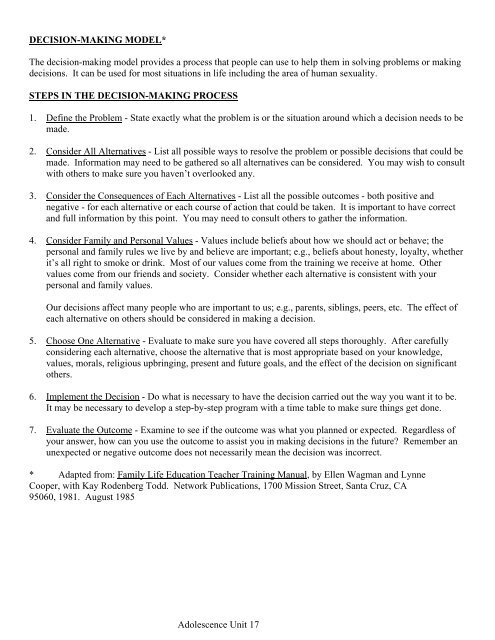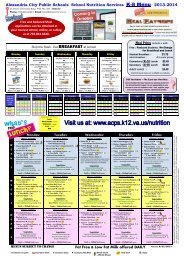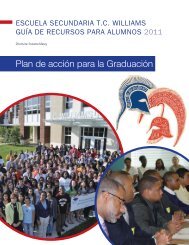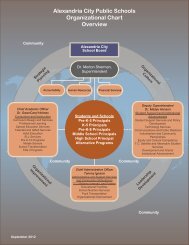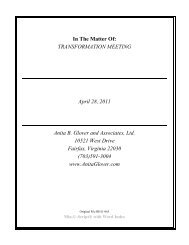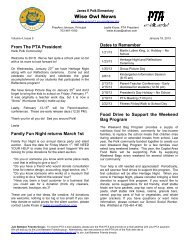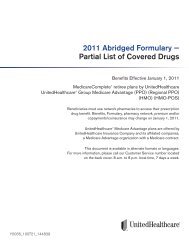Fundamentals of Human Growth and Development - Alexandria City ...
Fundamentals of Human Growth and Development - Alexandria City ...
Fundamentals of Human Growth and Development - Alexandria City ...
You also want an ePaper? Increase the reach of your titles
YUMPU automatically turns print PDFs into web optimized ePapers that Google loves.
DECISION-MAKING MODEL*<br />
The decision-making model provides a process that people can use to help them in solving problems or making<br />
decisions. It can be used for most situations in life including the area <strong>of</strong> human sexuality.<br />
STEPS IN THE DECISION-MAKING PROCESS<br />
1. Define the Problem - State exactly what the problem is or the situation around which a decision needs to be<br />
made.<br />
2. Consider All Alternatives - List all possible ways to resolve the problem or possible decisions that could be<br />
made. Information may need to be gathered so all alternatives can be considered. You may wish to consult<br />
with others to make sure you haven’t overlooked any.<br />
3. Consider the Consequences <strong>of</strong> Each Alternatives - List all the possible outcomes - both positive <strong>and</strong><br />
negative - for each alternative or each course <strong>of</strong> action that could be taken. It is important to have correct<br />
<strong>and</strong> full information by this point. You may need to consult others to gather the information.<br />
4. Consider Family <strong>and</strong> Personal Values - Values include beliefs about how we should act or behave; the<br />
personal <strong>and</strong> family rules we live by <strong>and</strong> believe are important; e.g., beliefs about honesty, loyalty, whether<br />
it’s all right to smoke or drink. Most <strong>of</strong> our values come from the training we receive at home. Other<br />
values come from our friends <strong>and</strong> society. Consider whether each alternative is consistent with your<br />
personal <strong>and</strong> family values.<br />
Our decisions affect many people who are important to us; e.g., parents, siblings, peers, etc. The effect <strong>of</strong><br />
each alternative on others should be considered in making a decision.<br />
5. Choose One Alternative - Evaluate to make sure you have covered all steps thoroughly. After carefully<br />
considering each alternative, choose the alternative that is most appropriate based on your knowledge,<br />
values, morals, religious upbringing, present <strong>and</strong> future goals, <strong>and</strong> the effect <strong>of</strong> the decision on significant<br />
others.<br />
6. Implement the Decision - Do what is necessary to have the decision carried out the way you want it to be.<br />
It may be necessary to develop a step-by-step program with a time table to make sure things get done.<br />
7. Evaluate the Outcome - Examine to see if the outcome was what you planned or expected. Regardless <strong>of</strong><br />
your answer, how can you use the outcome to assist you in making decisions in the future? Remember an<br />
unexpected or negative outcome does not necessarily mean the decision was incorrect.<br />
* Adapted from: Family Life Education Teacher Training Manual, by Ellen Wagman <strong>and</strong> Lynne<br />
Cooper, with Kay Rodenberg Todd. Network Publications, 1700 Mission Street, Santa Cruz, CA<br />
95060, 1981. August 1985<br />
Adolescence Unit 17


